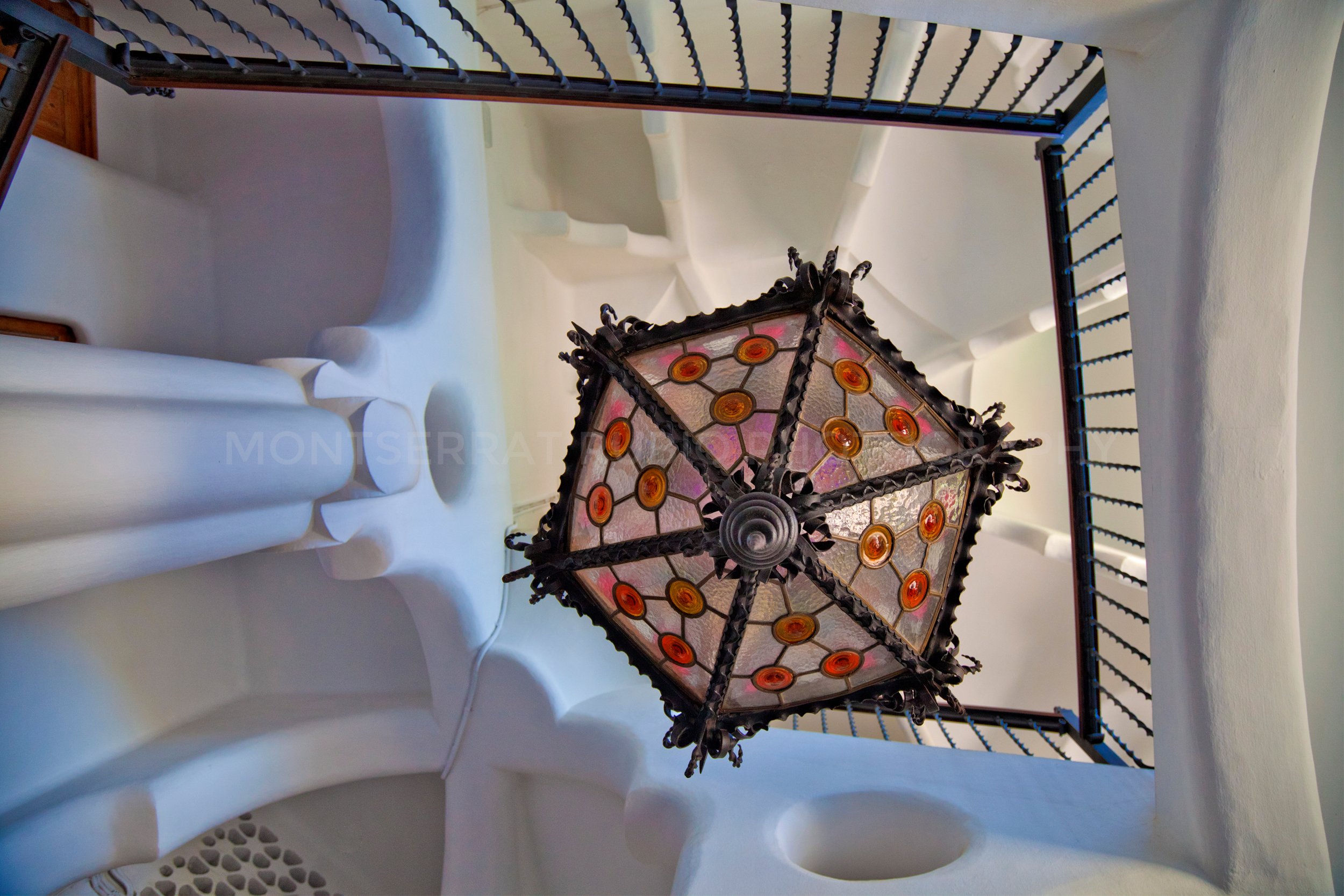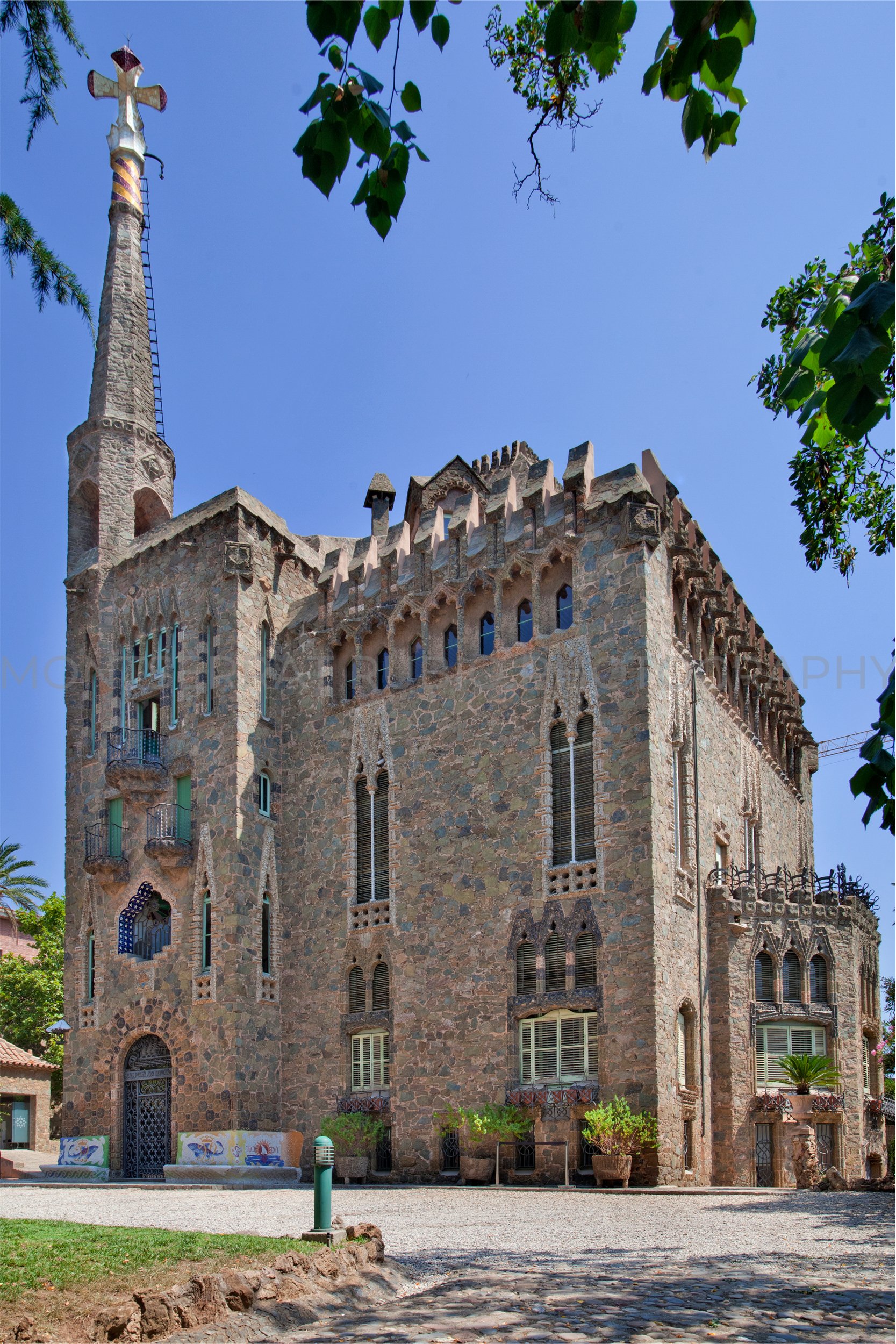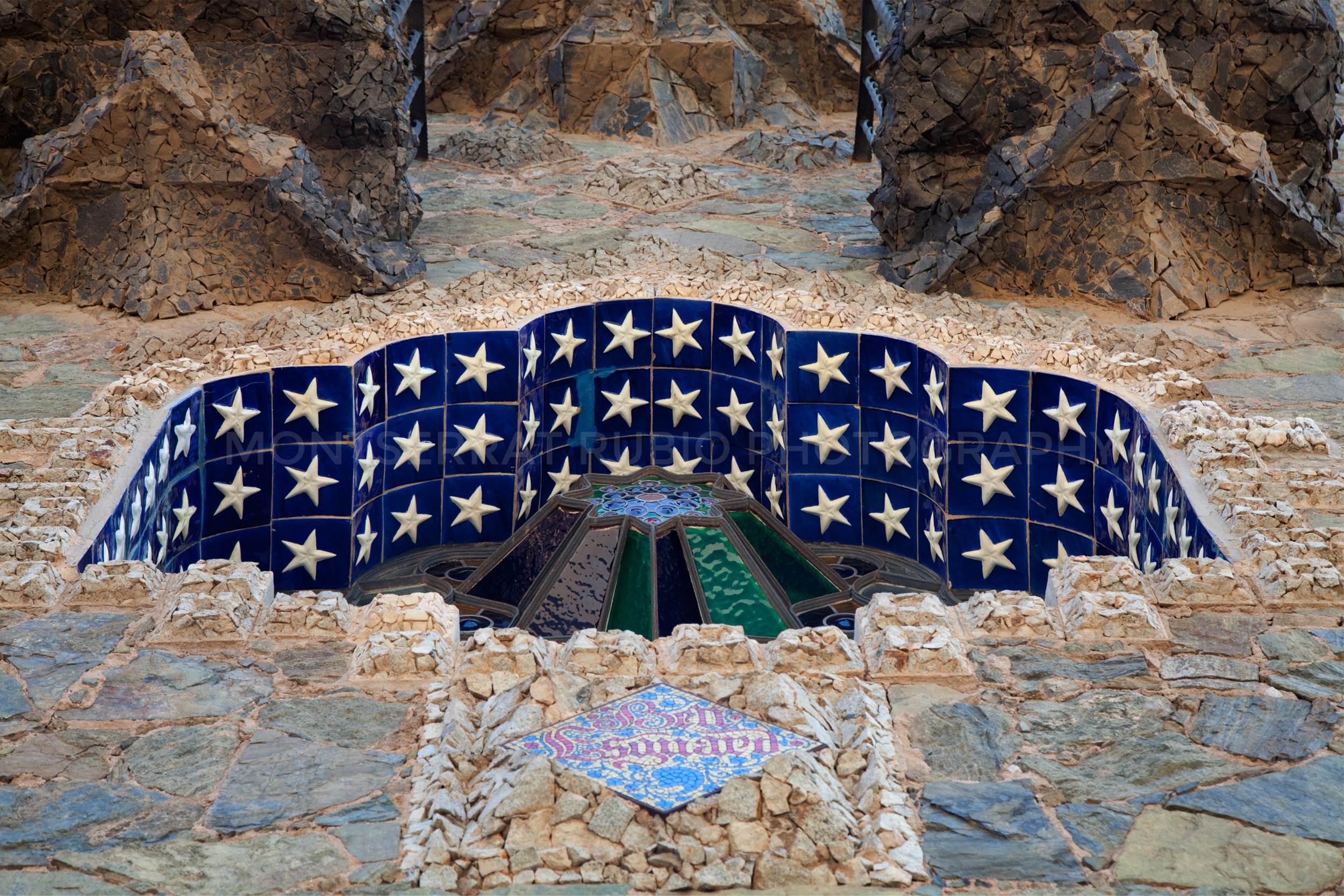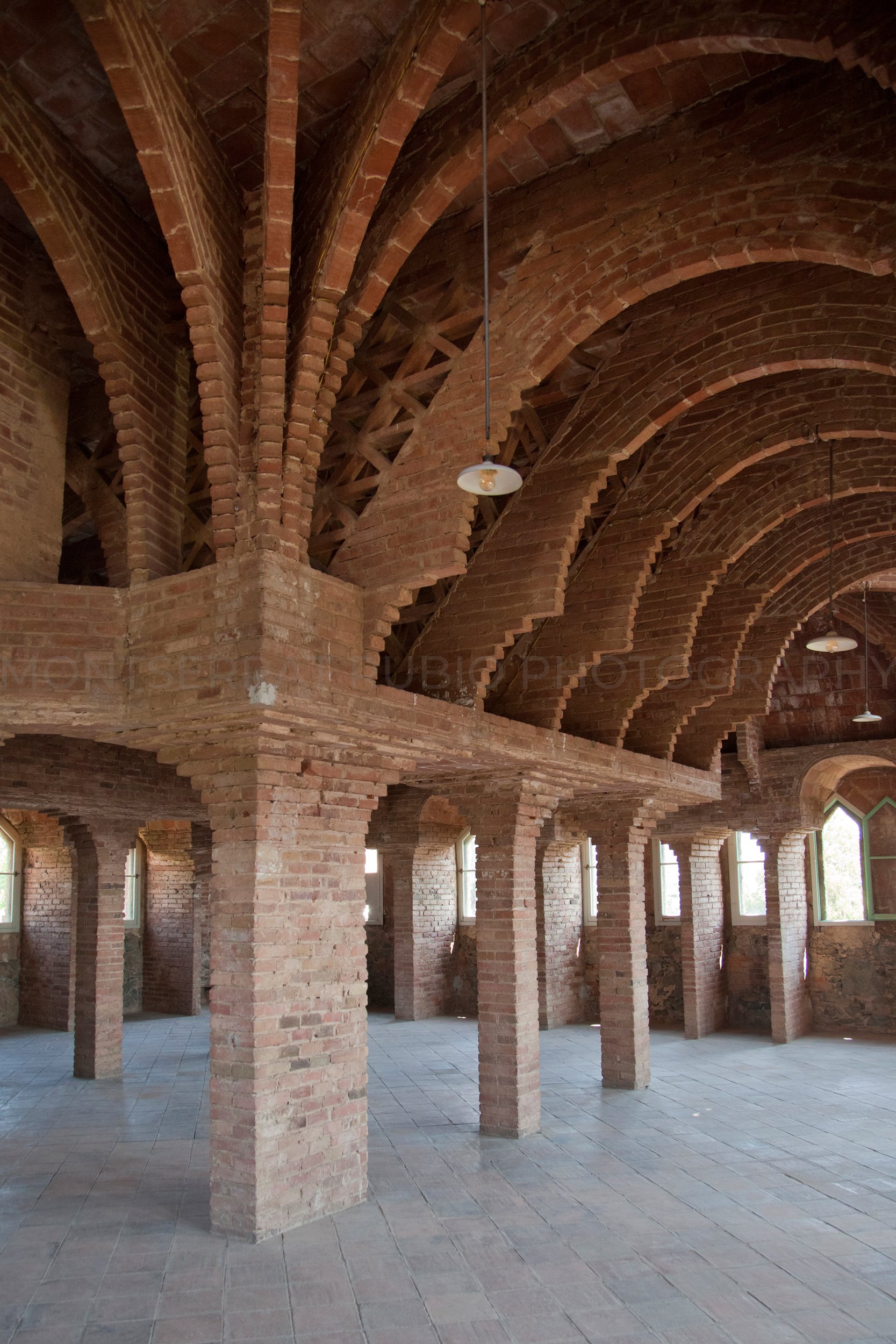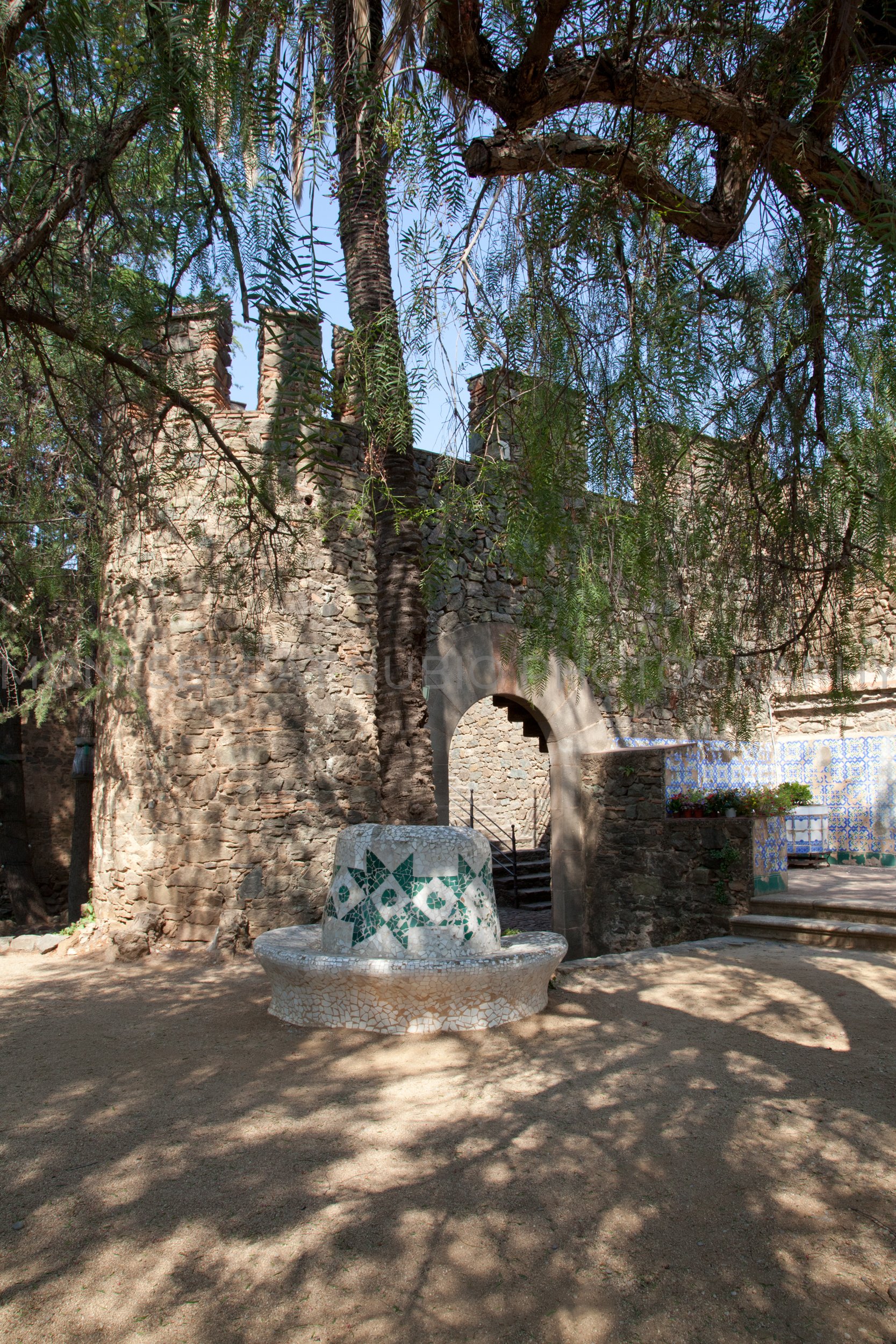I have thought that the best way to start a year full of challenges would be with a topic that inspires me. I have always had an interest in Antoni Gaudí and an enthusiasm for stories of sacrifice and commitment in restoration / conservation of natural, architectural, historical, cultural, artistic heritage... Whether they are from my hometown or my immediate environment. I admire and support anyone who goes ahead against adversity with a restoration project, as it was recently the case with Boys Hall, a short walk from my home..
Elies Rogent, director of Barcelona Architecture School, declared ”We have given this academic title either to a fool or a genius. Time will show."
Many of Gaudí clients dared and took a huge financial risk for the sake of his and their vision. Bellesguard ( Beautiful View) or La Casa Figueres is a manor house designed by Gaudí between 1900 and 1909 with the help of Joan Rubió and Domènec Sugrañes i Gras on the site of a castle built by king Martí the Human (1356 - 1410). Bellesguard was also the temporary residence of Pope Luna Benedict XIII and bandits too during its decline over the following centuries, that put an end to much of the structure until it was finally acquired by the Figueres - Sagues Molíns family. They commissioned Gaudí, who was very aware of the castle's past, and also granted freedom in its design, even if this meant to his client Jaume Figueres, who died before seeing the finished work, a much higher cost than expected. Gaudí’s perfectionist obsession, for example, of his “trencadis” details (his iconic ceramic mosaics) is largely what makes the façade especially beautiful. Unfortunately the widow of Jaume Figueres could not enjoy this house either, which she had to sell to avoid bankruptcy.
In the 1940s, the house was bought by the renowned and pioneering Doctor Luis Guilera Molas with the intention of creating a clinic dedicated to the treatment and research of Cancer. In the late 1960s his son, a gynaecologist, inherited the hospital. Some locals were born in Bellesguard in the first half of the 1970s, until it moved to more spacious facilities and the Guileras kept the building for private use. In recent decades they started allowing public access to the exteriors.
In 2009 the restoration works began on some areas of the property for public visits and in 2018 the sale to the Catalana Occidente Group was concluded. The company continued with the restoration project initiated by the Guilera family, which undertook its rehabilitation with its own capital.
Back in time to 1909. This is one of Gaudí ’s most aesthetically "straight" and modest works. But also the most personal at the time. The historical importance of this place was an irresistible temptation, that made him act as an intermediary between the former owner and Jaume Figueres. As a starting point, Gaudí built a viaduct, similar to the ones in Parc Güell, made with the stones of the palace wall that lay on the property. The main building retains some of the original walls and structures of the castle, thus creating an austere and elongated stone exterior in Gothic-Modernist style, but bright and airy in the Mozarabic style on the inside. Adding symbols, such as the staines glass window with the star of Venus (or Ishtar) over the entrance , or the iconic tower with its cross and the red tile detail in tribute to the kingdom of Catalonia and Aragon. The attic, designed as a music room, is a large space exposed brickwork that occupies the entire footprint of the building, the roof is supported by eight pillars and numerous brick arches following the technique of the Catalan Vault, introduced in the United States by the Valencian architect Rafael Guastavino.
Bellesguard is located in the Sant Gervasi neighbourhood, at the foot of Collserolla mountain, away from the tourist routes, which makes the visit an even more a pleasant experience. It does not have the spectacular factor of other works such as the Casa Batllo, but Bellesguard is a reference for those looking to learn more about Gaudí's work and the history of one of the most peaceful and beautiful houses I have visited in Barcelona.
To see more of my architectural photography work on Gaudí , visit https://www.montserratrubio.com/fine-art-#/gaudi/

